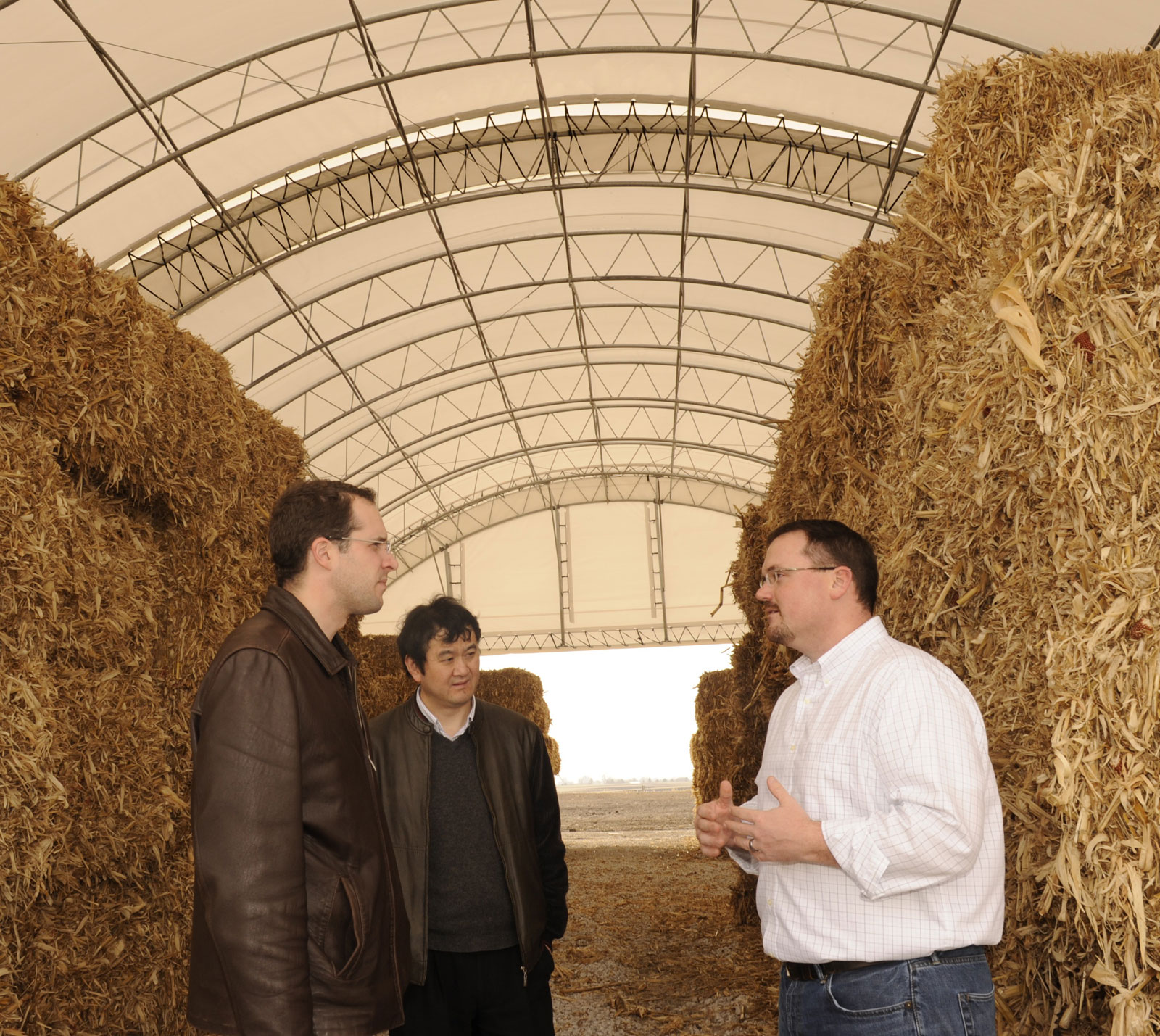
Are Hoops Good Homes For Biomass?
Iowa State scientists have teamed with a company planning to build a biomass ethanol plant to research how to keep the material in the best condition before
it is processed.
“The research we’re conducting is focused on understanding how the quality of biomass is influenced by harvesting and storage systems. Enhancing the quality of feedstock improves the conversion economics and final product quality,” says Matt Darr, assistant professor of agricultural and biosystems engineering.
DuPont Danisco Cellulosic Ethanol (DDCE) is evaluating the construction of an ethanol plant in Story County or Webster County. The plant will use biomass, such as corn stover, instead of corn grain to ferment into ethanol.
Storing biomass is a common practice, but research is lacking on how well it is preserved during storage. Darr’s research, which is sponsored by DDCE, is evaluating mjust that.
Biomass quality is impacted both by the cleanliness of feedstock when harvested and by biological processes that take place during storage.
“You can’t produce ethanol from soil,” Darr says. “Any soil collected during corn stover harvest adds to the overall cost of the delivered product and it increases the byproduct handling requirements of the biorefinery. Plus, in some conversion processes the added soil will actually decrease the conversion efficiency which is a significant economic factor.”
Deterioration during storage can also induce negative economic and biomass quality factors.
“It’s like leaving a loaf of bread on the counter for nine months,” Darr says. “If the biomass molds or deteriorates not only are you losing money because you’re losing feedstock or material, but the physical properties and chemical properties change during storage.”
DDCE discovered Iowa State’s capabilities in this area through its participation in the Biobased Industry Center, according to Kyle Althoff, the company’s director of feedstock development. The center was founded in 2008 to use the resources of interdisciplinary research and education programs to address critical business, infrastructure, supply chain and policy issues facing the growing biobased economy.
“The objective of DDCE’s work with Iowa State is to analyze the economic factors impacting the supply of corn stover to a future commercial cellulosic ethanol plant,” Althoff says. Three hoop structures, open on the ends, have been built and are being used to store bales of stover in addition to several outdoor stacks of stover bales covered with plastic tarps. The structures are located at the BioCentury Research Farm, which is devoted to researching the production, harvest, storage, transportation and processing of biomass materials.
Most of the material was harvested in central Iowa on privately owned farms that were contracted with DDCE. After the storage research, the biomass material will be shipped to DDCE’s demonstrationscale plant where it will be evaluated for its ability to be converted to ethanol.



